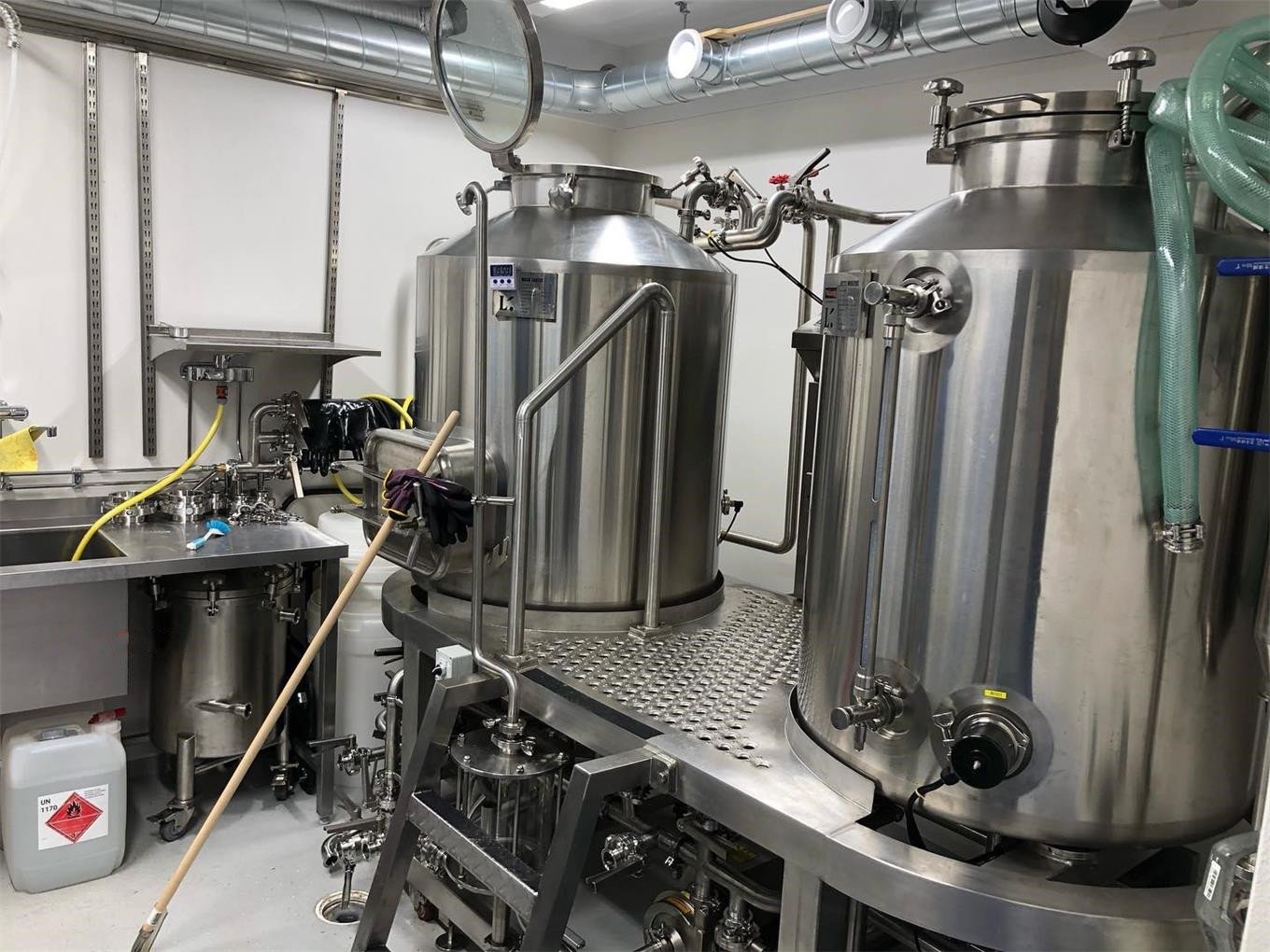How to Build a Successful Beer Manufacturing Plant
Basic Overview of Beer Manufacturing Plants
Beer manufacturing plants are at the heart of an industry steeped in tradition, innovation, and craft. These facilities, also known as breweries, produce beer on a commercial scale, ranging from small craft breweries to large industrial plants. At their core, beer manufacturing plants are designed to convert raw materials like malted barley, hops, water, and yeast into the beloved beverage through a series of processes. From fermentation tanks to packaging lines, each component of the plant plays a crucial role in ensuring consistent quality and flavor.
Beer isn’t just about science; it’s about art. It’s the balance between maintaining precise production techniques while experimenting with flavors that keeps the industry thriving. Whether you’re a beer enthusiast or an entrepreneur eyeing the brewing business, understanding how these plants operate can provide a deeper appreciation for the drink and the industry.
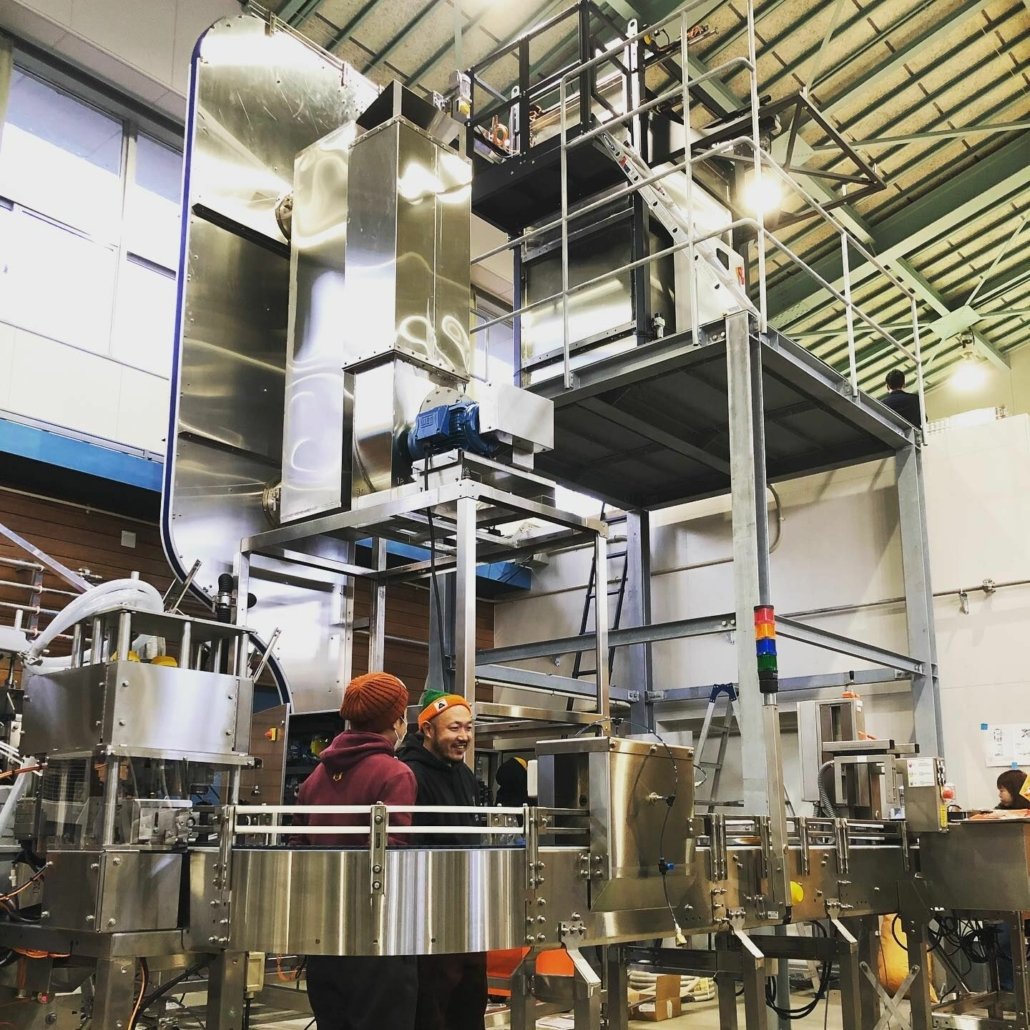
Detailed Explanation of the Production Process in Beer Manufacturing Plants
Brewing beer involves a fascinating mix of biology, chemistry, and engineering. Here’s a step-by-step breakdown:
1. Malting
The journey begins with malting, where barley grains are soaked in water, allowed to germinate, and then dried in a kiln. This process develops enzymes essential for converting starches into fermentable sugars during brewing. The choice of malt significantly impacts the beer’s flavor, color, and body.
2. Mashing
Next, the malted barley is crushed and mixed with hot water in a mash tun. This process extracts sugars from the malt, creating a sweet liquid known as wort. Precision in temperature and timing is crucial here, as these factors influence the beer’s flavor profile.
3. Boiling
The wort is transferred to a large kettle and boiled. During this stage, hops are added to provide bitterness, aroma, and flavor. Boiling also sterilizes the wort and removes unwanted volatile compounds.
4. Fermentation
After cooling, the wort is transferred to fermentation tanks, where yeast is introduced. Yeast ferments the sugars in the wort, producing alcohol and carbon dioxide. Depending on the beer style, fermentation can take several days to weeks.
5. Conditioning
Once primary fermentation is complete, the beer is conditioned to develop its final flavors and remove unwanted byproducts. This step may include aging, filtration, and carbonation.
6. Packaging
The final product is packaged into bottles, cans, or kegs, ready for distribution. Automation and quality control systems ensure consistency and efficiency during this stage.
Key Points and Equipment in the Beer Manufacturing Plant Process
Beer manufacturing relies on specialized equipment to ensure high-quality production. Here are some of the essential components:
- Mash Tuns: For mixing malt and water.
- Lauter Tuns: For separating wort from spent grain.
- Boiling Kettles: For boiling wort and adding hops.
- Fermentation Tanks: For converting sugars into alcohol.
- Conditioning Tanks: For maturation and flavor development.
- Packaging Lines: For bottling, canning, or kegging the beer.
Each piece of equipment is designed to optimize efficiency, maintain quality, and meet regulatory standards.


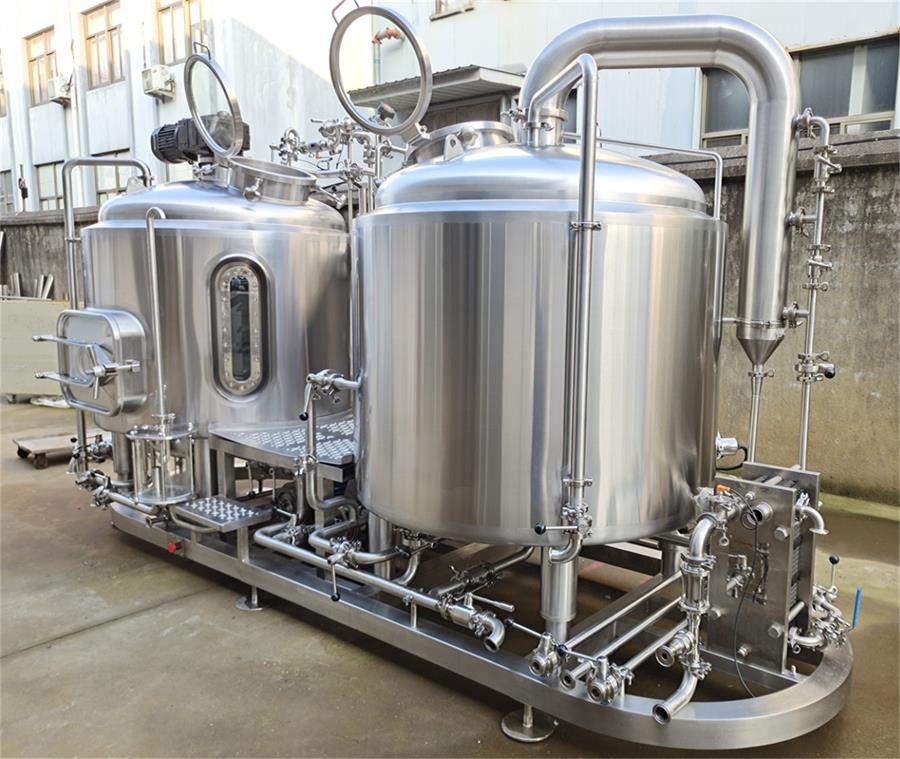
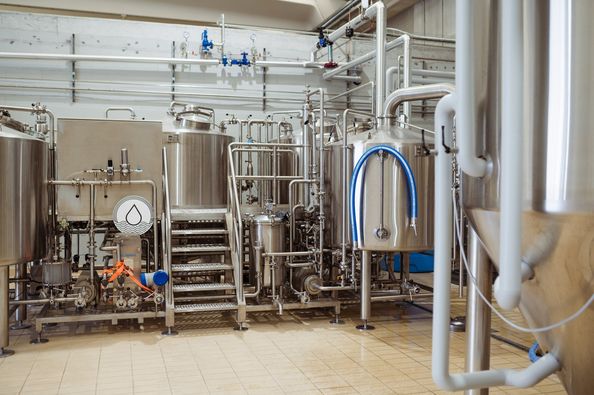
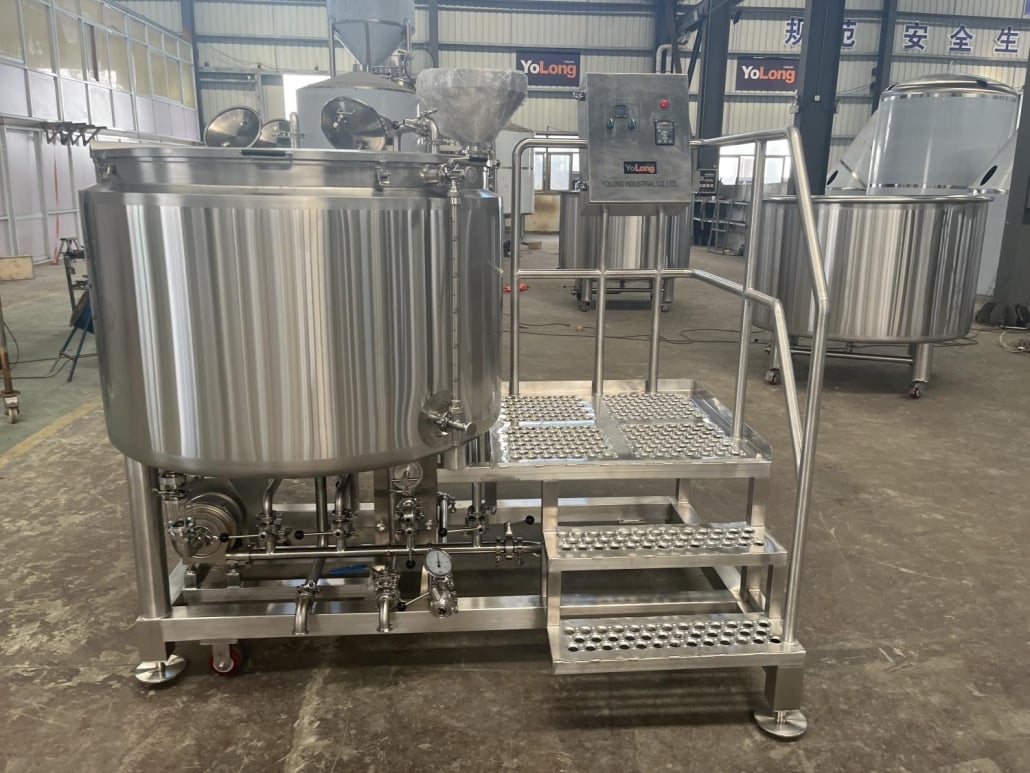

Common Equipment for Beer Manufacturing Plants
| Equipment | Purpose | Features |
|---|---|---|
| Mash Tun | Mixing malt and water for sugar extraction | Insulated, temperature-controlled |
| Lauter Tun | Separating wort from spent grains | Filter plates, automated raking systems |
| Boiling Kettle | Boiling wort and adding hops | Steam or electric heating, whirlpool functionality |
| Fermentation Tanks | Converting sugars to alcohol using yeast | Stainless steel, pressure-rated, temperature-controlled |
| Conditioning Tanks | Aging and flavor refinement | Sealed tanks with CO2 injection capabilities |
| Packaging Line | Bottling, canning, or kegging beer | Automated fillers, labelers, and sealers |
Environmental Protection and Sustainability in Beer Manufacturing Plants
Sustainability is becoming a cornerstone of modern brewing. Breweries are implementing eco-friendly practices to minimize their environmental footprint. This includes:
- Water Conservation: Recycling process water and optimizing usage.
- Energy Efficiency: Using renewable energy sources like solar and wind.
- Waste Management: Repurposing spent grains as animal feed or biofuel.
- Sustainable Packaging: Reducing single-use plastics and increasing recyclable materials.
By adopting these measures, breweries can align with global sustainability goals while appealing to environmentally conscious consumers.
How Beer Manufacturing Plants Reduce Their Carbon Footprint and Water Consumption
Reducing the carbon footprint and conserving water are critical challenges for breweries. Solutions include:
- Heat Recovery Systems: Capturing and reusing heat from boiling or cooling processes.
- Closed-Loop Water Systems: Recycling water for cleaning and cooling applications.
- Carbon Capture Technology: Trapping CO2 released during fermentation for reuse in carbonation.
- Energy-Efficient Equipment: Upgrading to modern systems that consume less power.
- Onsite Renewable Energy: Installing solar panels or wind turbines.
By integrating these technologies, breweries not only save resources but also enhance their profitability in the long run.
Setting Up and Cost Analysis of Beer Manufacturing Plants
Starting a beer manufacturing plant involves significant planning and investment. Key factors include:
- Initial Setup Costs: Ranging from $100,000 for small-scale breweries to millions for large industrial setups.
- Facility Requirements: Sufficient space for equipment, storage, and future expansion.
- Licensing and Permits: Compliance with local alcohol production and distribution laws.
- Operational Costs: Raw materials, utilities, and workforce expenses.
Conducting a thorough feasibility study can help identify potential challenges and opportunities.
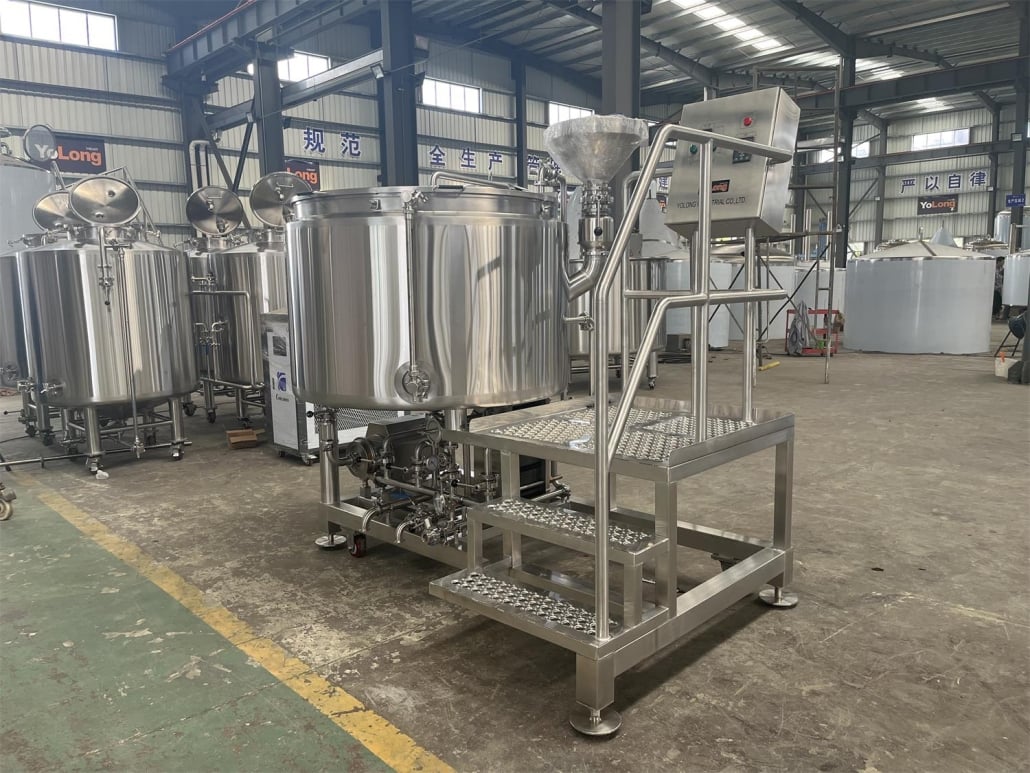
How Beer Manufacturing Plants Promote New Brands
Launching a new beer brand is as much about marketing as it is about brewing. Breweries use various strategies, such as:
- Telling a Story: Sharing the inspiration behind the beer to connect emotionally with consumers.
- Innovative Packaging: Eye-catching designs and eco-friendly materials.
- Social Media Campaigns: Engaging with audiences through creative content and promotions.
- Collaborations: Partnering with local artists, chefs, or other breweries.
- Events and Tastings: Offering samples at festivals or hosting brewery tours.
Building a strong brand identity helps breweries stand out in a competitive market.
FAQ
| Question | Answer |
|---|---|
| What are the main ingredients used in beer production? | Malted barley, hops, water, and yeast. |
| How long does it take to brew beer? | Depending on the style, it can take 2-6 weeks. |
| What is the average cost of setting up a brewery? | It varies widely, but small-scale setups start around $100,000. |
| How can breweries be more sustainable? | By recycling water, using renewable energy, and minimizing waste. |
| What equipment is essential for brewing beer? | Mash tuns, fermentation tanks, boiling kettles, and packaging lines. |
| Can breweries produce non-alcoholic beer? | Yes, through techniques like arrested fermentation or vacuum distillation. |
Additional FAQs About Building a Beer Manufacturing Plant
1) What production KPIs should a Beer Manufacturing Plant track from day one?
- Track brewhouse efficiency, cellar capacity utilization, water-to-beer ratio (hl/hl), CO2 usage per bbl, energy intensity (kWh/bbl or MJ/hl), packaging yield/loss, TPO/DO at package, and on-time-in-full (OTIF) delivery.
2) How much space is typically required per 1,000 bbl annual capacity?
- Rule of thumb: 1.0–1.5 sq ft per annual bbl for production plus 0.5–1.0 sq ft for warehouse/packaging. A 10,000 bbl/year Beer Manufacturing Plant often needs 15,000–25,000 sq ft, depending on layout and packaging mix.
3) What utilities are critical for reliability and scalability?
- Three-phase power, steam or high-capacity electric for heat, glycol chilling with redundancy (N+1), compressed air (oil-free for packaging), CO2/N2 supply or recovery, RO/DI water, and adequate floor drains with pretreatment for wastewater.
4) Which certifications or standards help with compliance and market access?
- OSHA/ISO-based safety programs, HACCP or food safety plans aligned to FDA Food Code, 3-A or EHEDG hygienic design principles, and pressure vessel codes (ASME/CE) for tanks. Environmental permits for air, wastewater, and noise may be required.
5) What’s the fastest way to reduce operating costs without hurting quality?
- Implement heat recovery (wort vapor condenser to HLT), VFDs on pumps/fans, closed transfers with verified CO2 purges, CIP optimization with conductivity/temperature control, and preventive maintenance to reduce downtime and loss.
2025 Industry Trends for Beer Manufacturing Plants
- Energy-aware design: Heat recovery and staged chillers reduce peak demand; utilities now a top-3 cost focus.
- Automation retrofit: PLC/HMI, smart valves, and inline sensors added to legacy brewhouses to stabilize quality.
- CO2 strategy: More plants adopt micro CO2 recovery or nitrogen blending to mitigate supply volatility.
- Water stewardship: Breweries target ≤5.0 hl/hl via CIP reuse and leak-down testing; grants available in some regions.
- Packaging resiliency: Semi-automatic canning with inline QA (seam check, TPO) standard even at mid-scale.
2025 Benchmarks and Cost Ranges (North America/EU)
| Metric | 2023 Avg | 2024 Avg | 2025 YTD | Notes/Sources |
|---|---|---|---|---|
| Brewhouse efficiency (%) | 70–82 | 71–83 | 72–84 | Training + mill control; BA/MBAA |
| Water-to-beer (hl/hl) | 6.0–7.5 | 5.0–6.8 | 4.5–6.0 | With CIP reuse & HR |
| Energy intensity (kWh/bbl) | 35–55 | 32–50 | 30–48 | DOE/BA cases |
| Inline DO at brite adoption (%) | 31 | 38 | 47 | OEM surveys |
| CO2 recovery adoption (micro plants) | 5–8 | 8–12 | 12–18 | Vendor data |
| Packaging line (35–50 cpm) capex | $180k–$300k | $170k–$290k | $165k–$280k | Features vary |
| Basic QA lab startup | $8k–$15k | $7k–$13k | $6k–$12k | pH, DO, spec, micro |
Reference hubs:
- Brewers Association benchmarking/quality/sustainability: https://www.brewersassociation.org/
- DOE Better Buildings (food & beverage energy): https://betterbuildingssolutioncenter.energy.gov/
- MBAA Technical Quarterly: https://www.mbaa.com/publications/tq/Pages/default.aspx
- IBD Knowledge Centre: https://www.ibd.org.uk/
Latest Research Cases
Case Study 1: Heat Recovery and CIP Optimization in a New Plant (2025)
Background: A 12,000 bbl/year Beer Manufacturing Plant projected high utilities and water intensity.
Solution: Installed a wort vapor condenser to preheat HLT, added VFDs to wort/glycol pumps, implemented conductivity-controlled CIP with reuse tanks, and added leak-down testing.
Results: Energy intensity reduced 18%; water-to-beer ratio improved from 6.6 to 5.1 hl/hl; annual utility savings ~$48k; payback in ~15 months. Sources: DOE Better Buildings toolkits; BA sustainability calculators.
Case Study 2: Inline QA Retrofit to Reduce Packaging Loss (2024)
Background: Mid-size plant saw variable seaming quality and elevated TPO leading to returns.
Solution: Added inline DO/TPO checks, automatic seam analyzer sampling, and CO2 pre-flush SOP at filler bowl; trained operators on SPC charts.
Results: Packaging loss dropped from 3.8% to 2.1%; average TPO reduced 35%; customer complaints decreased 60% over 9 months. References: MBAA TQ packaging QA articles; OEM application notes.
Expert Opinions
- Mary Pellettieri, Quality Consultant and Author of “Quality Management for Breweries”
Viewpoint: “A plant’s quality system starts with measurement discipline—pH, DO, and aseptic sampling—backed by clear SOPs. Small QA investments prevent the most expensive failures.” - Dr. Charlie Bamforth, Distinguished Professor of Malting & Brewing Science
Viewpoint: “Consistency is the hallmark of a successful Beer Manufacturing Plant. Control oxygen and temperature, and your brand will travel well.” - Bart Watson, Economist (former), Brewers Association
Viewpoint: “In 2025, taproom-first revenue plus efficient packaging for to‑go formats provides the healthiest cash flow—right-size capex and monitor COGS per pint.”
Practical Tools and Resources
- Brewers Association: Benchmarking, QA guidance, sustainability tools — https://www.brewersassociation.org/
- DOE Better Buildings: VFD, heat recovery, and energy management playbooks — https://betterbuildingssolutioncenter.energy.gov/
- MBAA Technical Quarterly: Process/packaging QA, CIP validation — https://www.mbaa.com/publications/tq/Pages/default.aspx
- IBD: Plant design and process control training — https://www.ibd.org.uk/
- ProBrewer: Used equipment marketplace and forums — https://www.probrewer.com/
- Seam/Package QA: Double seam guidelines (Can Manufacturers Institute) — https://www.cancentral.com/
- Environmental permitting/water tools: Local utilities, pretreatment programs; EPA water tools — https://www.epa.gov/watersense
Last updated: 2025-09-28
Changelog: Added 5 targeted FAQs; 2025 benchmark table and trends; two recent plant-focused case studies; expert viewpoints; curated tools/resources with authoritative links for Beer Manufacturing Plant planning and optimization
Next review date & triggers: 2026-03-31 or earlier if utility costs shift >15%, packaging QA standards update, or new incentives for CO2 recovery/water reuse are released
Share this entry
Interested in learning more about Brewing Systems including additional details and pricing information? Please use the form below to contact us!
YOLONG BREWERY EQUIPMENT FAQS
- Commercial Brewery / Craft Brewery / Microbrewery / Nanobrewery
- What is The Difference Between Craft Beer and Industrial Beer?
- The Bespoke Differences In Custom Brewing Systems
- Everything You Need to Know About Kettle Souring
- How to Choose Brewing Equipment for Your business?
- How To Choose The-Best Partner To Build Your Commercial Microbrewing System?
- Two Detection Sensors That You Need To Use In Your Brewhouse System
- Remote Control Applications in Brewing Equipment/How does it work?
- How To Clean Your Brand New Brewery Tanks?

